I just got back from a sleep retreat – here's how I am recreating it at home for better rest, and why you should too
I went on the Woolroom Sleep Retreat and I'm bringing all the best bits home with me. Here's what you need to sleep better


Ever since I went on the Woolroom Sleep Retreat, I've wanted to host my own sleep retreat at home. One night of uninterrupted slumber wasn't enough − I wanted to get the same quality of sleep at home, surrounded by the little stresses of ordinary life, as I did in a five-star hotel.
If you want to learn how to sleep better, you've come to the right place. I can tell you all the best bits from my recent sleep retreat and show you exactly what you need to replicate it at home. I'm talking the best pillow to rest your head and the best duvet inserts to regulate your temperature.
Some of the best bits of a sleep retreat happen the night before and the morning after. I'll talk you through how to make your bedroom cozy with soft lighting and subtle fragrance, what to eat to get a good night's sleep, and how to keep the good vibes going the next day.
How to have a sleep retreat at home
Sure, you could spend thousands of dollars and several nights on a sleep retreat at a luxury resort, but I wouldn't: not when you can easily recreate the experience in the comfort of your own home. All you need is a night to yourself, fresh produce in the fridge, and bedding that meets your sleep needs.
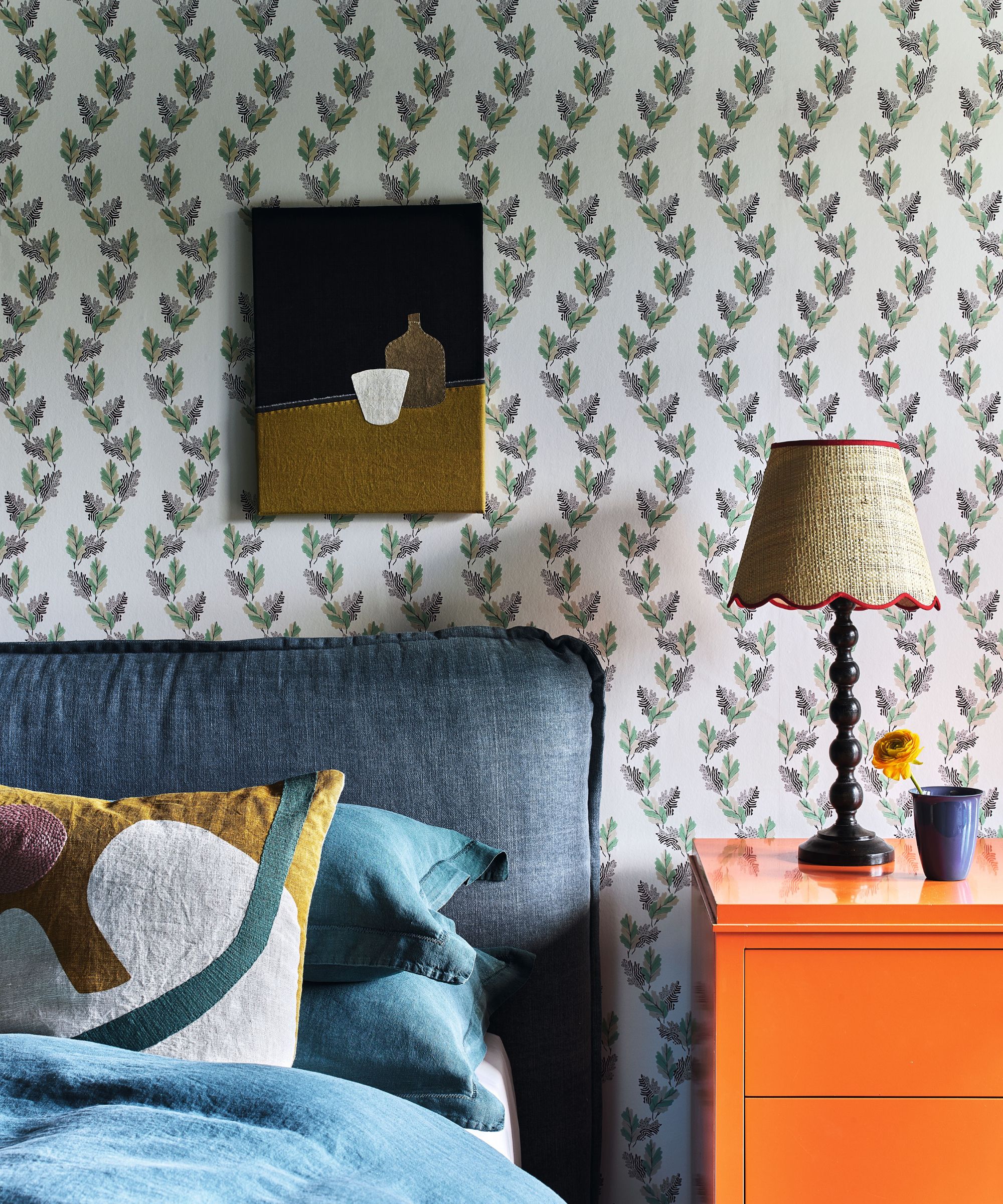
The night before
1. Define your sleep style
Before you begin, ask yourself why you feel you need a sleep retreat. Perhaps you keep waking up with a blocked nose or a racing heart, or you suffer from night sweats and hot flashes that make it harder to drift off in the first place.
A lot of these common sleep problems arise because we simply aren't sleeping on the right stuff. The best bedding should be tailored to your sleep needs and specific situation. What works for a hot sleeper won't work for someone who lives in a cooler climate, and vice versa.
To match his customers with their ideal bedding set, Woolroom's Managing Director Chris Tattersall developed a sleep questionnaire. I recommend asking yourself some of his questions to work out what you need from your bedding to sleep better.

As the managing director at Woolroom and a sleep expert in his own right, Chris knows how to put on a relaxing sleep retreat. He has more than a decade's experience in the intersecting industries of textiles and sleep.
First, consider your sleep position: whether you tend to lie on your front, back, or side. That should inform how you like your pillows: deep and soft, firm and supportive, or thin and flat. Next, consider temperature: whether you run hot or cold, and whether you live in a warm, cool, or temperate climate. This might influence whether you opt for the best warm comforter or the best cooling comforter.
Now, you can move onto more practical matters. Consider the size of your bed (consult our mattress size chart if you're unsure) and decide whether you'd like your bedding to be true to size or oversized for a dramatic drape. Finally, consider your own health and wellbeing. If you suffer from allergies, for example, you might want to invest in an antibacterial duvet. Wool is naturally hypoallergenic to bust dust mites and aid uninterrupted sleep.
To save you some time and money, I've rounded up a few of my favorite products that address common sleep problems. Some of these pieces are from Woolroom, while the rest hail from other trusted vendors.
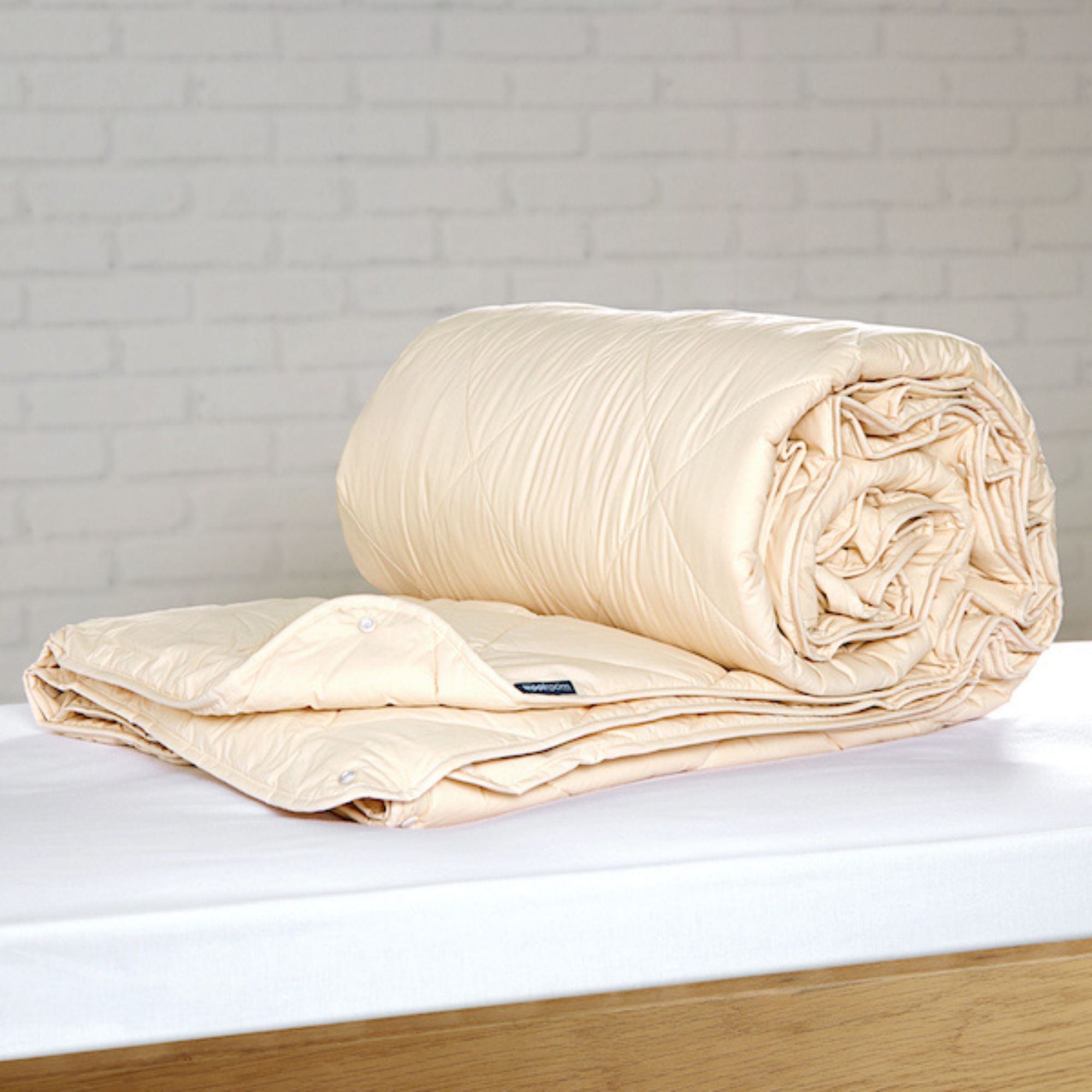
This thermoregulating comforter has something for everyone: whether you sleep hot or cold and live in a warm or cool climate. Wool is naturally breathable and moisture-wicking, capable of keeping you just the right side of cool and comfortable.
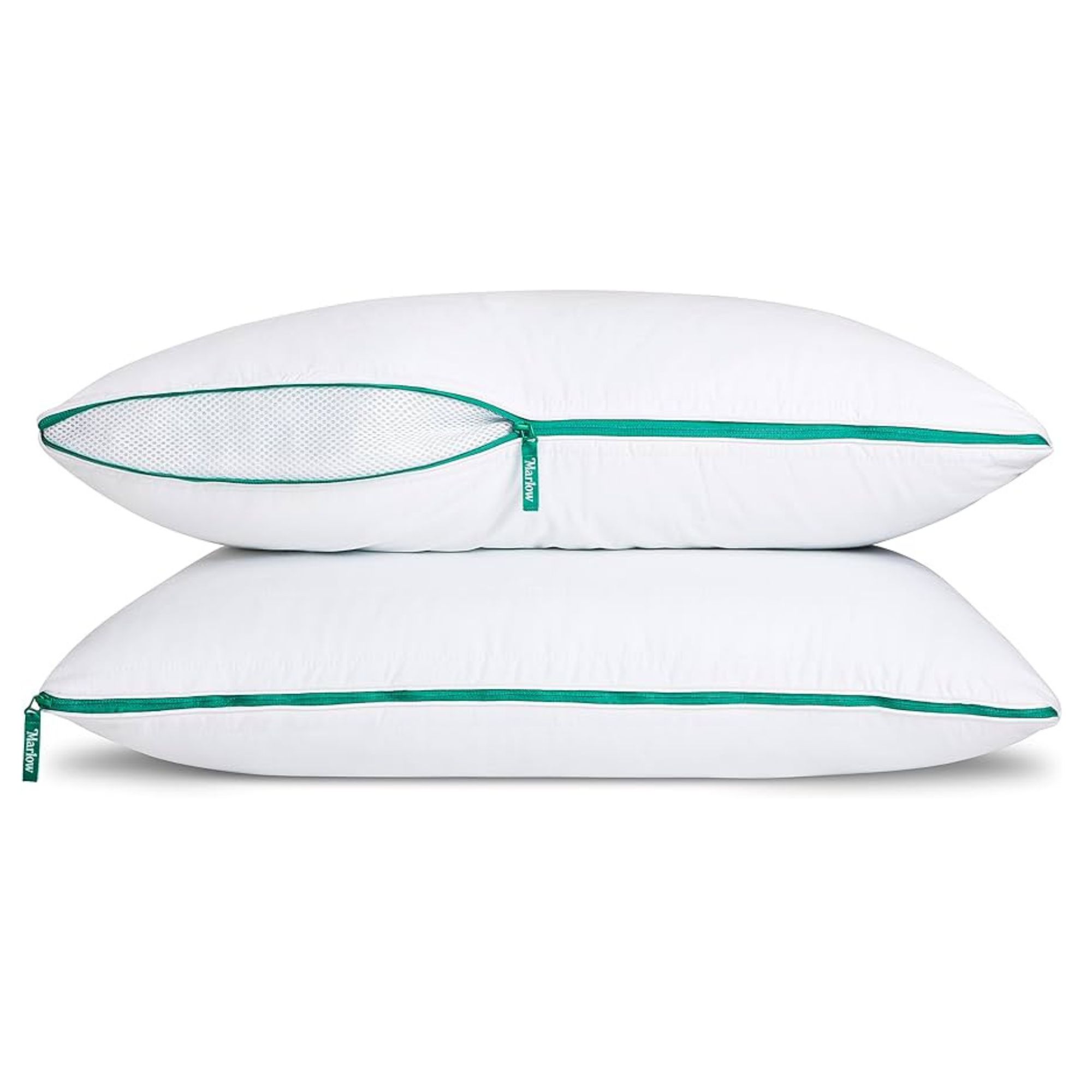
Whether you lie on your front, back, or side, you'll sleep comfortably on the Marlow Pillow. Filled with breathable foam and wrapped in cotton sateen, the Marlow Pillow insert is secured with two zippers. All you need to do is close the zippers for a firmer feel that's ideal for side sleepers, or open them for a softer surface.
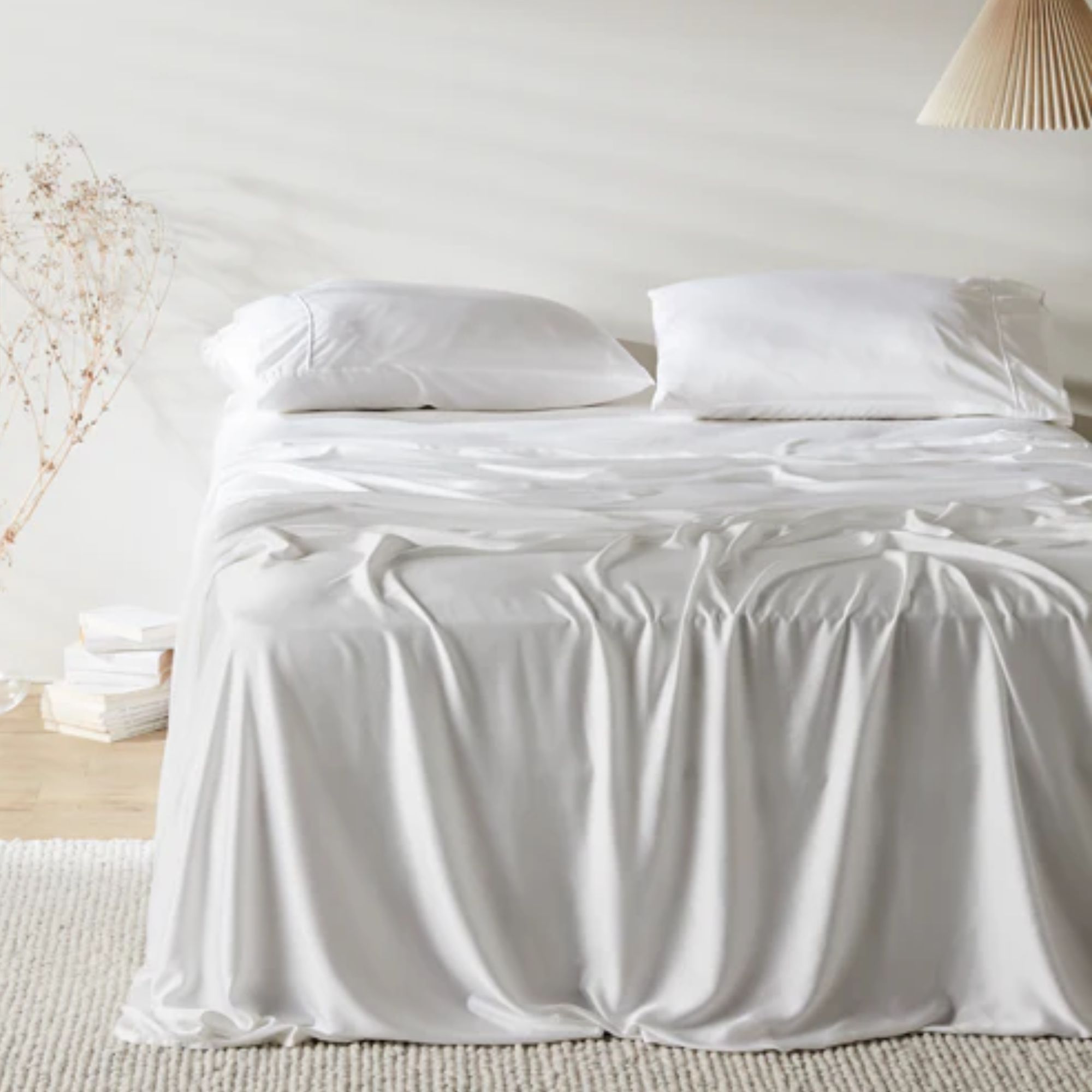
These are the world's best cooling sheets. Each flat sheet, fitted sheet, and pillowcase in the Signature Sateen Sheet Set is made from breathable bamboo: not just any bamboo, but a specific high-fiber species that grows three times faster than we can harvest it. You can rest easy in the knowledge that you aren't depleting natural resources.
2. Set the scene
If you really want to relax and unwind during your sleep retreat at home, I suggest you prep your space the night before. It shouldn't take long – in fact, you can learn how to clean a bedroom in five easy steps – but it will make a world of difference.
Once you've cleaned your bedroom, it's time to clear the air. There are lots of different ways to make your bedroom smell good for sleep and you can afford to shop around to find the products that suit you. You could light one of the best candles to scent the air and cast a warm glow or stick to the best essential oil diffuser for ease.
If you fancy rearranging your space, you could rejig your furniture to optimize your bedroom feng shui. Clear out any clutter and shift your bed to a commanding position, facing but not directly in line with the door.
You might not have the time or space to reshuffle your furniture before your home sleep retreat, and that's okay. Any of these products would make a quick and easy upgrade to small bedrooms and master suites alike.
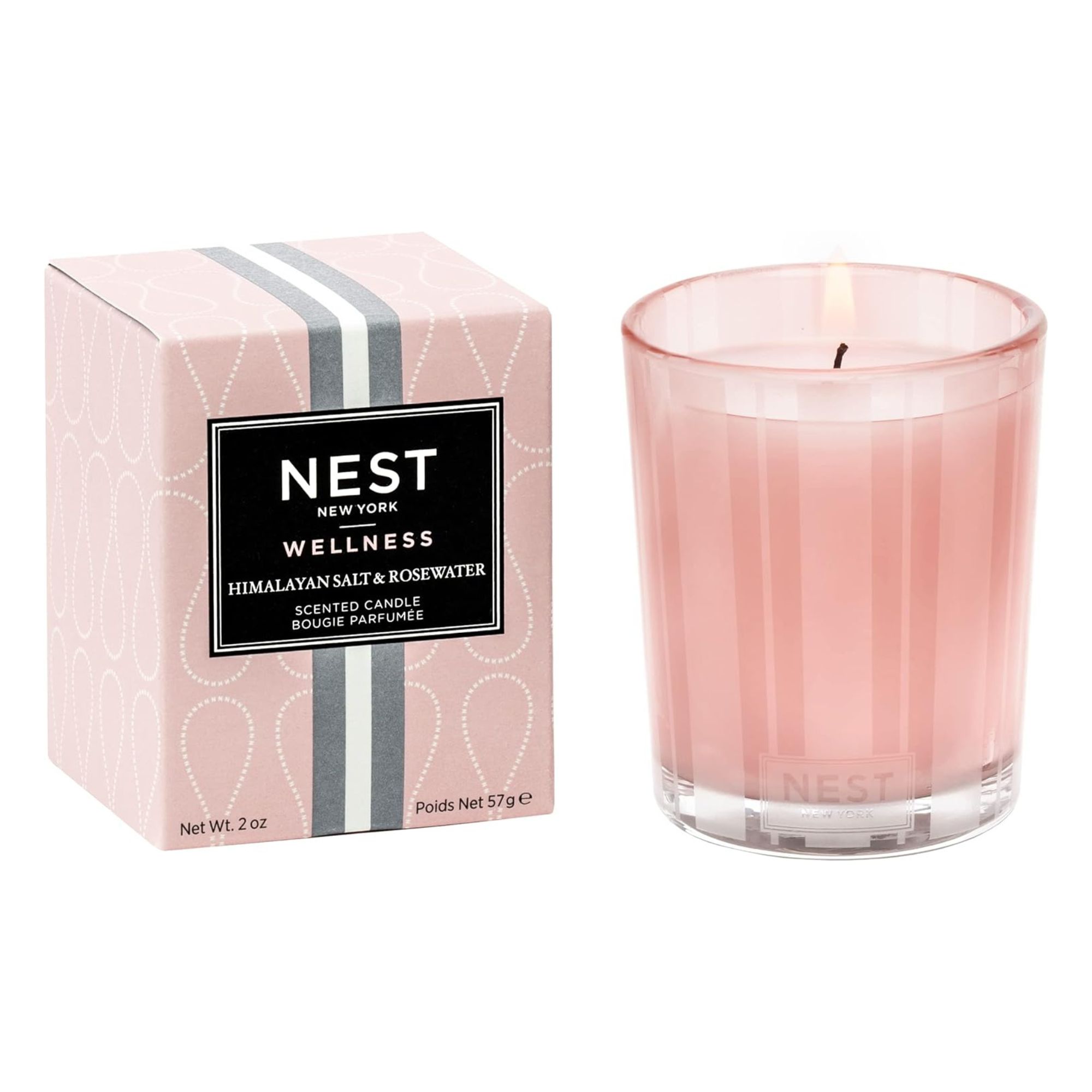
This candle gets the seal of approval from our very own master perfumer, Laura Honey. Blending Himalayan salt and rosewater with subtle notes of geranium and salted amber, this scent is rich and luxurious. It burns clean and suits every season. Bonus for vegan shoppers: this candle features vegetable wax.
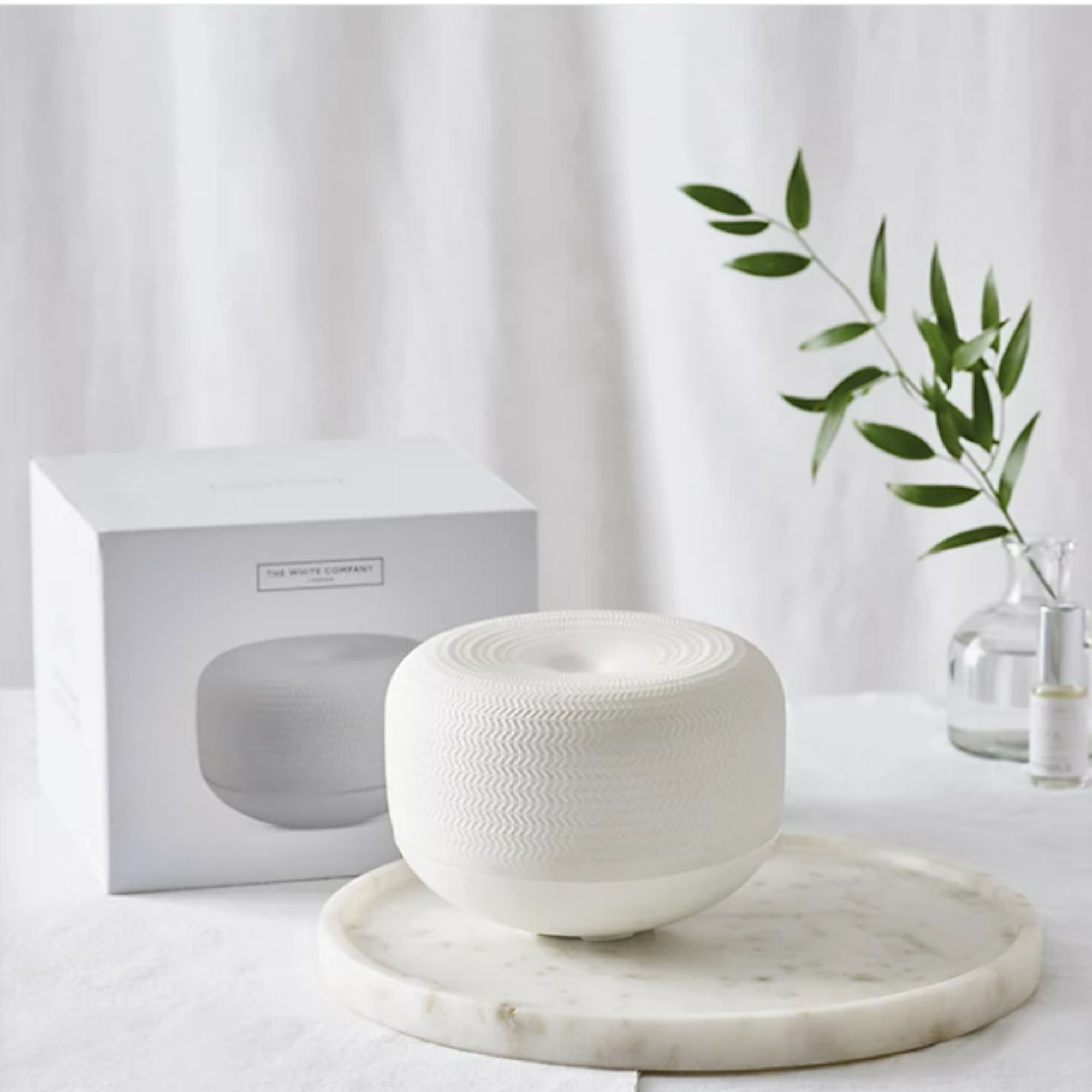
This little number from The White Company proves that essential oil diffusers can be pretty, as well as practical. Made from clay, hardened by heat, and finished with a herringbone design, this electronic diffuser should blend beautifully with all styles of bedroom decor. You can set it to release scent for up to 16 hours for a complete refresh.
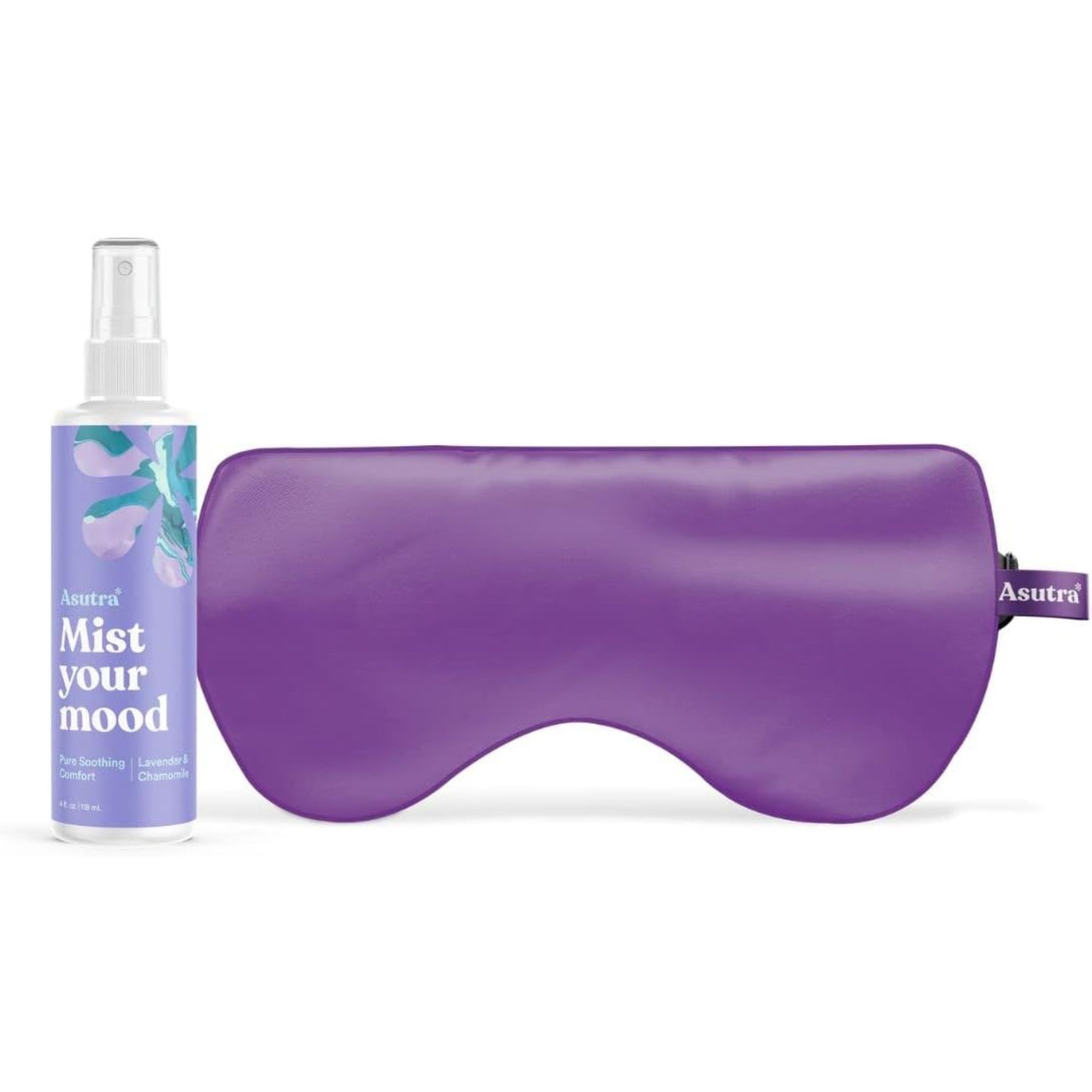
This Oprah Winfrey sleep hack could take your at-home sleep retreat to the next level, and it's only $35 at Amazon. Made from 100% silk and infused with lavender, this sleep mask is weighted for ultimate relaxation. It also comes with a natural sleep spray to mist around the room.
The evening of
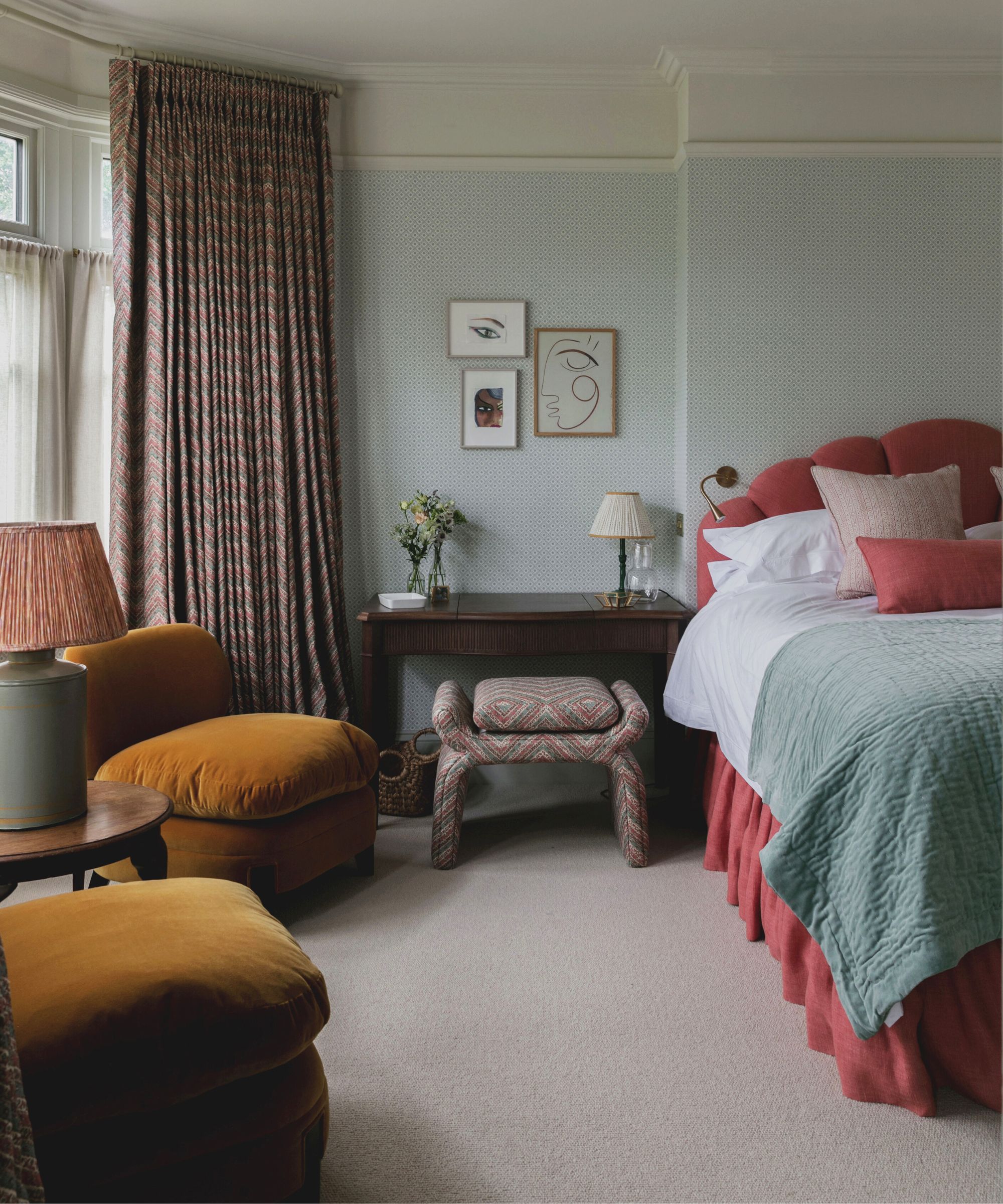
3. Settle your stomach
What we eat has an impact on how we sleep. According to the National Sleep Foundation, a high-fiber diet with plenty of fresh produce and low-fat proteins encourages healthier sleep. In light of these findings, Woolroom asked Chef Stuart Cauldwell to curate a menu for our sleep retreat. Here's what I had, and how you could cook up something similar in your own kitchen.
To start, I had a quinoa and pomegranate salad. Stuart says that 'quinoa is a complex carbohydrate that increases serotonin levels in the brain, promoting relaxation and improving sleep quality,' while 'pomegranate seeds are rich in antioxidants, which help to reduce inflammation and stress levels'.
For my main course, I had the sea bass with fennel and cherry tomatoes. 'Sea bass is rich in omega-3 fatty acids, which have been linked to improved sleep quality by reducing inflammation,' explains Stuart. You could pick up a set of the best chef's knives to fillet that fish to perfection. 'Fennel contains anethole, a compound that may have sedative effects, while cherry tomatoes contain vitamin C, which has been linked to improved sleep duration'.
My dessert was a deconstructed apple pie. According to Stuart, 'apples are a natural source of antioxidants and fiber, which can help to regulate blood sugar levels and prevent disrupted sleep'. You could always opt for the cheese selection, which is 'rich in tryptophan, calcium, and protein, all of which play key roles in sleep regulation'. Lay it out nicely on a cheese board: use your own, or pick up something like the Alessandra Marble Cheese board from Anthropologie for just $40.

Stuart came to the Sun Street Hotel via Gordon Ramsay's The Narrow, and more recently, Roast at Borough Market. He designed my sleep retreat menu in collaboration with Woolroom to help me wind down naturally.
4. Turn down the lights
As H&G's resident sleep writer, I'm often asked what type of lighting is best for bedrooms. Time and again, I recommend warm lighting. Remember: your bedroom is your sleep sanctuary. You need warm lights to soothe your mind and settle your circadian rhythm.
That's very useful advice for decorators and renovators, who have the time and money to plan bedroom lighting. If you've only just decided to hold a sleep retreat at home, and you don't want to tear out your light fixtures, your best bet is a warm bulb or a little lamp.
For an affordable fix, I like the GE 40W Equivalent LED Globe Light Bulbs, available from Target. These bulbs cast a warm yellow glow that's bright enough to read by yet easy on the eyes. From West Elm, I like the Tala Knuckle Table Lamp. It would sit pretty on your nightstand comes with an inline dimmer to control the soft white light. If you want to splurge on something special, I recommend the Hyperion Table Lamp from Anthropologie. It comes in a range of cute colors to complement any bedroom color palette.
The morning after
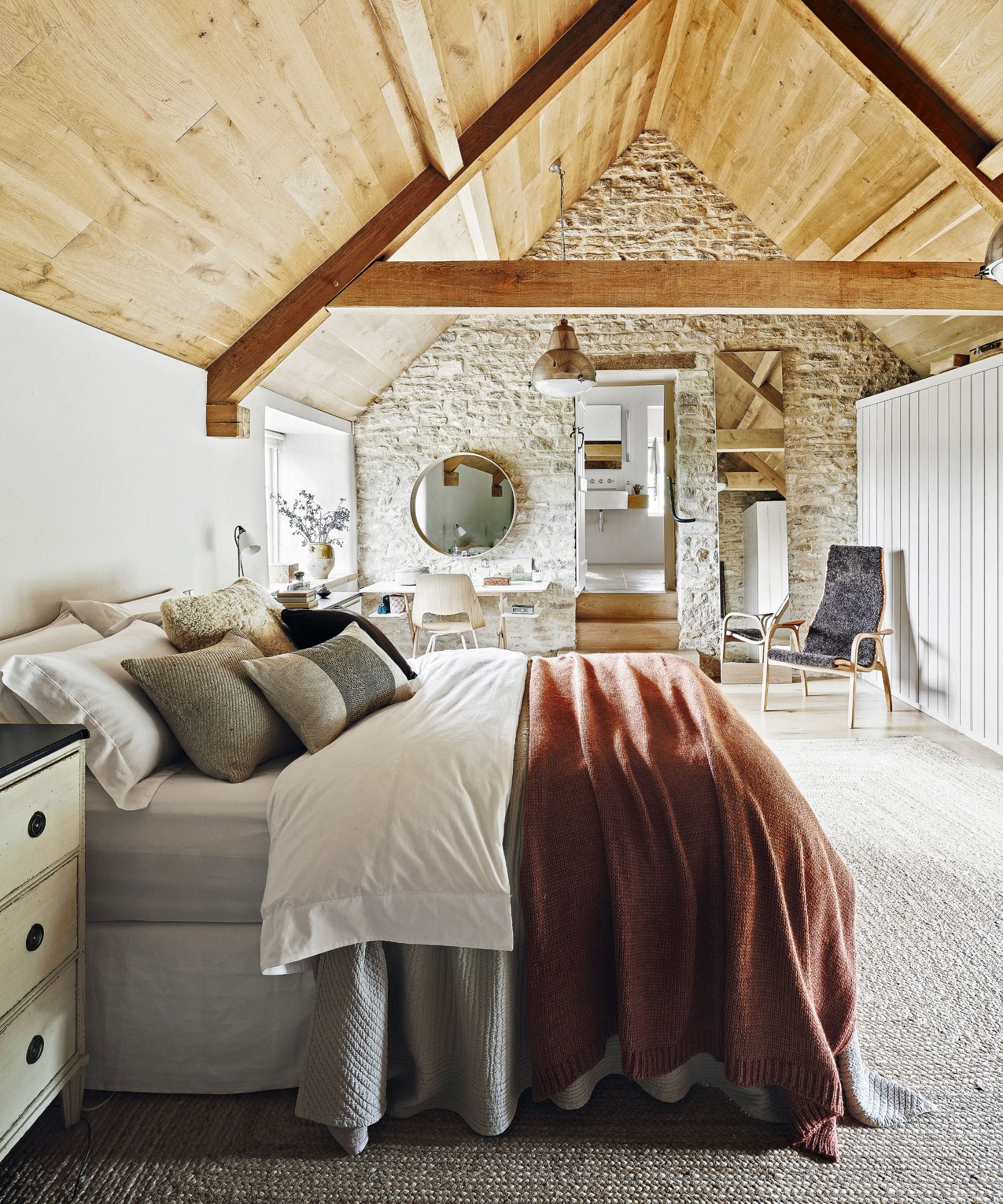
5. Center yourself
You could eat all the right foods, set a soothing atmosphere in the bedroom, and get the best night's sleep of your life, but that all goes to waste if you rush back into your ordinary routine.
The final stage of a sleep retreat at home is one of the most important: taking it slow the morning after. Try to resist the urge to go on your phone first thing and take a few minutes to center yourself.
On the Woolroom Sleep Retreat, I took part in a pillow yoga session, designed and led by Victoria Woodhall, which allowed me to focus on my breathing and my body: in short, anything apart from the work I had to do that day. If yoga isn't your thing, I'd encourage you to sit outside in your yard or take a short stroll through your neighborhood. You could pop on a podcast or just take in the surroundings.
Once you've spent some time up and moving, it's time for breakfast. I had smoked salmon and scrambled eggs: something nutritious and delicious that feels like a bit of a treat. You've heard it a million times, but a good breakfast sets you up for a great day, and it provides the perfect opportunity to reflect on your sleep retreat at home − and plan your next retreat.
Final thoughts
One of the best bits of a sleep retreat is the opportunity to reconnect with nature and settle your circadian rhythm. If you're keen to experiment with natural sleep solutions, you could try grounding your mattress. I asked the experts: 'do grounding sheets work?' We're yet to see conclusive scientific proof, but a lot of anecdotal evidence indicates they do.
Sign up to the Homes & Gardens newsletter
Design expertise in your inbox – from inspiring decorating ideas and beautiful celebrity homes to practical gardening advice and shopping round-ups.

Emilia is our resident sleep writer. She spends her days tracking down the lowest prices on the best mattresses and bedding and spends her nights testing them out from the comfort of her own home. Emilia leads a team of testers across America to find the best mattress for every sleep style, body type, and budget.
Emilia's quest to learn how to sleep better takes her all around the world, from the 3Z mattress factory in Glendale, Arizona to the Hästens headquarters in Köping, Sweden. She's interviewed luxury bedding designers at Shleep and Pure Parima, as well as the Design Manager at IKEA. Before she joined Homes & Gardens, Emilia studied English at the University of Oxford.
-
 Zooey Deschanel and Jonathan Scott's breakfast nook is an innovative, effective use of kitchen space – it turns a 'dead area' into a cafe-style corner
Zooey Deschanel and Jonathan Scott's breakfast nook is an innovative, effective use of kitchen space – it turns a 'dead area' into a cafe-style cornerJonathan and Zooey have situated an eccentric yet elegant dining area in what may have been an otherwise underused corner
By Hannah Ziegler Published
-
 6 things you should never throw in the trash – and what to do for safe disposal instead
6 things you should never throw in the trash – and what to do for safe disposal insteadFrom batteries to space heaters, experts reveal what not to throw
By Andy van Terheyden Published